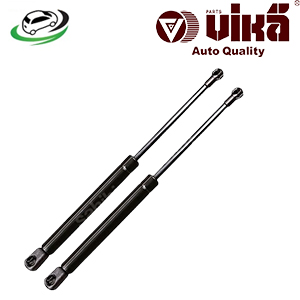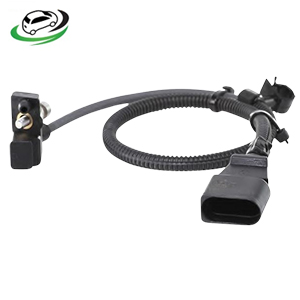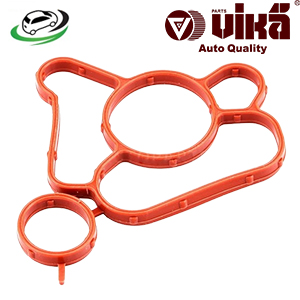-57%
Get Oil Filter Housing Bracket Gasket AUDI 8V S3/A3 8V/ VW Golf VII/Golf VII R/Beetle/Passat B7/Tiguan MQB 06L115441
The oil filter housing bracket gasket is a crucial component in the engine’s lubrication system. It ensures a proper seal between the oil filter housing and the engine block, preventing oil leaks and maintaining the engine’s optimal performance. In this detailed guide, we’ll explore the function, types, benefits, signs of wear, and maintenance of the oil filter housing bracket gasket, as well as the replacement process.
What is an Oil Filter Housing Bracket Gasket?
The oil filter housing bracket gasket is a seal that sits between the oil filter housing and the engine block. Its primary role is to create a leak-proof barrier that prevents engine oil from escaping. The gasket is typically made from durable materials that can withstand high temperatures and pressures within the engine.
Components of the Oil Filter Housing System
- Oil Filter Housing: This component houses the oil filter and is attached to the engine block. It serves as a mounting point for the oil filter and channels oil to and from the filter.
- Oil Filter: The oil filter removes contaminants from the engine oil before it circulates through the engine. It is screwed into the oil filter housing.
- Oil Filter Housing Bracket Gasket: Positioned between the oil filter housing and the engine block, this gasket creates a seal that prevents oil leaks.
- Mounting Bolts: These secure the oil filter housing to the engine block and compress the gasket to ensure a tight seal.
Function of the Oil Filter Housing Bracket Gasket
The primary function of the oil filter housing bracket gasket is to provide a secure and leak-proof seal between the oil filter housing and the engine block. This is essential for maintaining proper oil pressure and ensuring that engine oil is efficiently circulated through the engine.
Key Functions
- Prevent Oil Leaks: The gasket prevents engine oil from leaking out of the connection between the oil filter housing and the engine block. Without a proper seal, oil could escape, leading to low oil levels and potential engine damage.
- Maintain Oil Pressure: A proper seal ensures that oil pressure remains stable, which is crucial for the engine’s lubrication system to function correctly.
- Protect Engine Components: By preventing oil leaks, the gasket helps protect other engine components from being exposed to oil, which could cause damage or reduce their lifespan.
Types of Oil Filter Housing Bracket Gaskets
Oil filter housing bracket gaskets come in various types and materials, each designed to meet specific performance and durability requirements. The choice of gasket material can affect its longevity and effectiveness.
Common Gasket Materials
- Rubber: Rubber gaskets are commonly used due to their flexibility and ability to create a tight seal. They are resistant to oil and heat but may degrade over time with exposure to high temperatures and chemicals.
- Silicone: Silicone gaskets offer excellent resistance to high temperatures and chemicals. They provide a durable and flexible seal, making them suitable for demanding engine environments.
- Paper or Fiber: Some gaskets are made from paper or fiber materials, which are often used in applications where flexibility and compressibility are needed. These gaskets are less durable than rubber or silicone but can be effective for certain applications.
- Metal-Embedded: These gaskets incorporate a metal core for added strength and durability. They are often used in high-pressure applications where extra support is required.
Benefits of the Oil Filter Housing Bracket Gasket
The oil filter housing bracket gasket provides several benefits that are critical for the proper functioning and longevity of the engine’s lubrication system. These benefits include preventing oil leaks, maintaining oil pressure, and protecting engine components.
Preventing Oil Leaks
- Leak-Proof Seal: The gasket creates a secure seal that prevents engine oil from leaking out of the connection between the oil filter housing and the engine block. This is essential for maintaining the engine’s oil levels and preventing potential damage.
- Reduced Maintenance Costs: By preventing leaks, the gasket helps avoid costly repairs and maintenance associated with oil leaks, such as replacing damaged engine components or cleaning up spilled oil.
Maintaining Oil Pressure
- Stable Oil Pressure: A proper seal ensures that oil pressure remains stable, which is crucial for the engine’s lubrication system. Stable oil pressure helps prevent engine wear and ensures that all moving parts receive adequate lubrication.
- Optimized Engine Performance: Consistent oil pressure contributes to optimal engine performance, fuel efficiency, and overall reliability.
Protecting Engine Components
- Prevents Contamination: By preventing oil leaks, the gasket helps protect other engine components from being exposed to oil, which could cause damage or reduce their lifespan.
- Reduces Wear and Tear: A proper seal helps reduce wear and tear on engine components by ensuring that oil is effectively circulated and maintaining proper lubrication.
Signs of a Worn-Out Oil Filter Housing Bracket Gasket
Like all gaskets, the oil filter housing bracket gasket can wear out over time. Recognizing the signs of a worn-out gasket is essential for preventing oil leaks and maintaining engine performance.
Common Symptoms of a Worn-Out Gasket
- Oil Leaks: One of the most obvious signs of a worn-out gasket is visible oil leaks around the oil filter housing. You may notice oil pooling or dripping under the vehicle or around the oil filter area.
- Low Oil Pressure: If the gasket is failing, it can cause a drop in oil pressure. You may see the oil pressure warning light on the dashboard or notice changes in engine performance.
- Oil Spots on the Engine: You may see oil spots or residue around the oil filter housing, indicating that the gasket is not sealing properly.
- Burning Oil Smell: Oil leaks can lead to oil coming into contact with hot engine components, causing a burning oil smell. This can be a sign that the gasket is failing and needs replacement.
Maintenance and Inspection of the Oil Filter Housing Bracket Gasket
Regular maintenance and inspection of the oil filter housing bracket gasket are essential for ensuring the proper functioning of the engine’s lubrication system. Proper care can help prevent oil leaks and extend the lifespan of the gasket.
Inspection Tips
- Visual Inspection: Periodically inspect the area around the oil filter housing for any signs of oil leaks or residue. Look for oil spots or pools under the vehicle and around the oil filter area.
- Check for Leaks: Monitor the engine oil level and check for any drops or fluctuations. If you notice a significant decrease in oil level, it may indicate a leak.
- Inspect the Gasket: If possible, visually inspect the gasket for any signs of wear, such as cracks, tears, or deformation. Any visible damage to the gasket should prompt replacement.
Maintenance Tips
- Regular Oil Changes: Regular oil changes help prevent buildup and contamination that can affect the gasket’s performance. Follow the manufacturer’s recommended oil change intervals.
- Keep the Area Clean: Keeping the area around the oil filter housing clean and free of debris can help prevent damage to the gasket and make it easier to detect leaks.
- Replace Worn Gaskets Promptly: If you notice any signs of wear or damage, replace the gasket as soon as possible to prevent further issues. Delaying replacement can lead to more significant problems, such as engine damage or low oil pressure.
Replacing the Oil Filter Housing Bracket Gasket
Replacing the oil filter housing bracket gasket is a relatively straightforward process that can be done with basic tools. Here’s a step-by-step guide to help you through the replacement process.
Replacement Process
- Prepare the Vehicle: Ensure the engine is cool and the vehicle is parked on a level surface. Lift the vehicle if necessary to access the oil filter housing.
- Drain the Oil: If needed, drain the engine oil to avoid spills during the replacement process. Place a drain pan under the oil pan and remove the drain plug.
- Remove the Oil Filter: Unscrew the oil filter from the oil filter housing. Be prepared for some oil to spill out.
- Remove the Oil Filter Housing: Unbolt the oil filter housing from the engine block, taking care not to damage any surrounding components. Remove the old gasket from the housing and engine block.
- Clean the Surface: Thoroughly clean the mating surfaces on both the oil filter housing and the engine block to remove any old gasket material or debris.
- Install the New Gasket: Place the new gasket onto the oil filter housing, ensuring it is properly aligned. Make sure the gasket is seated evenly around the entire perimeter.
- Reinstall the Oil Filter Housing: Position the oil filter housing back onto the engine block and bolt it into place. Tighten the bolts to the manufacturer’s recommended torque specifications.
- Reinstall the Oil Filter: Screw the oil filter back into the oil filter housing. Make sure it is securely tightened.
- Refill the Engine Oil: Reinstall the drain plug if it was removed and refill the engine with the recommended oil. Check the oil level and add more if necessary.
- Check for Leaks: Start the engine and let it run for a few minutes. Check for any signs of oil leaks around the oil filter housing and gasket area. Make sure everything is sealed properly.
Follow us on Facebook for more parts.



